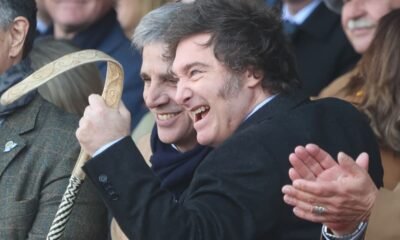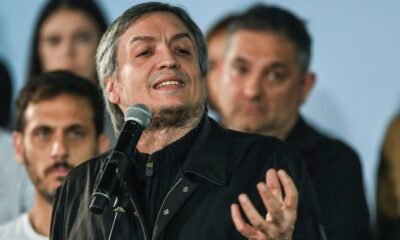INTERNACIONAL
Popes who have served the Catholic Church for the past 100 years: Champions of truth, faith and love
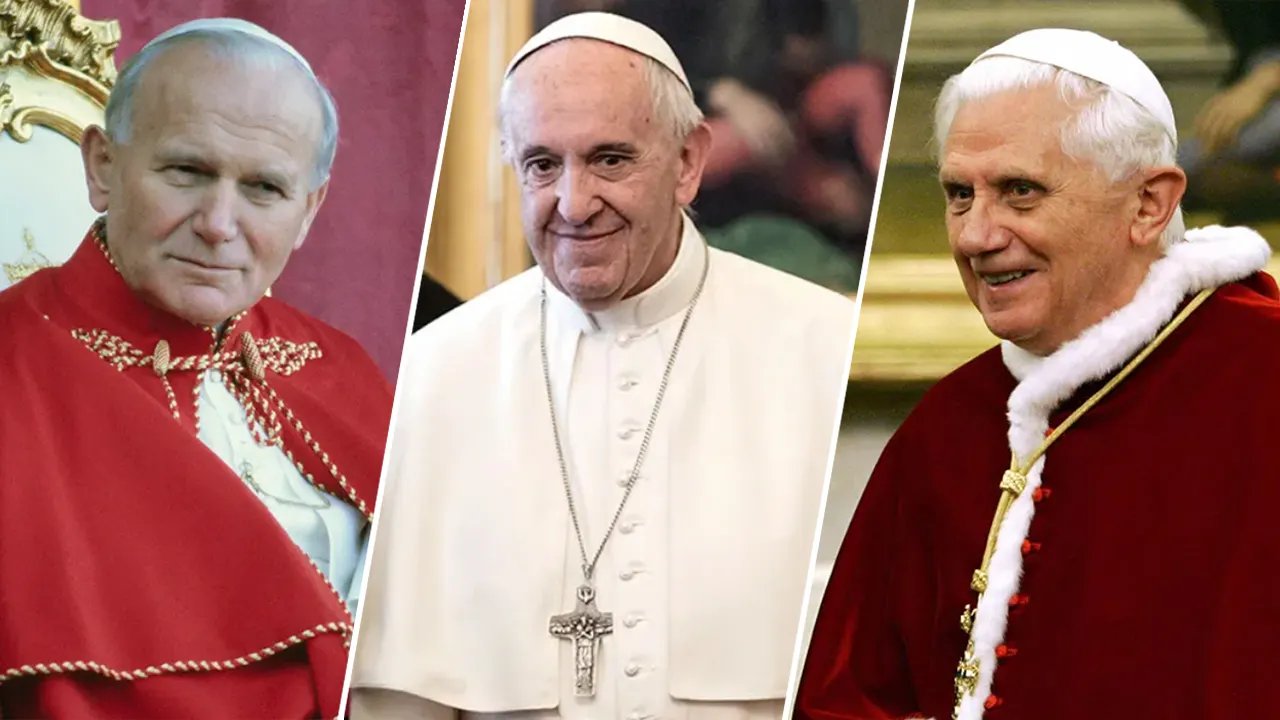
Pope Francis, 88, was recently diagnosed with bilateral pneumonia, and as concerned Catholics around the world pray for the Holy Father, the Vatican revealed last week that he will remain hospitalized for treatment.
The popes of the last 100 years have seen their fair share of political divides and controversy, from pontiffs breaking centuries-old practices to backlash over the Vatican’s response to Hilter’s regime to the teachings of God’s love and grace and traveling the world to reach the sick and lonely;
Pope Benedict XVI (2005-2013)
Before Pope Francis was elected by the College of Cardinals in 2013, Pope Benedict XVI, born Joseph Ratzinger, led the Catholic Church from 2005-2013.
POPE FRANCIS GOT OUT OF BED TO EAT BREAKFAST ON 7TH DAY IN HOSPITAL: VATICAN
Pope John Paul II, Pope Francis and Pope Benedict XVI (Getty Images)
Ratzinger was born in Bavaria, Germany. Upon witnessing horrific acts during the Nazi regime, he desired to commit to the church at a young age. Ratzinger and his family experienced abuse and punishment at the hands of the Nazi Party. Despite his resolute disdain for the regime, at 14 years old he was required by law to join the Hitler Youth, a paramilitary organization.
During his enrollment in the seminary, Ratzinger was drafted into World War II, putting his theological teachings on hold. He was captured and held as a prisoner of war by Americans for several months. Upon his release, he left the military and was ordained in 1951 alongside his brother.
Ratzinger was elected pope in 2005 and, during his papacy he preached a message of God’s eternal love, encouraged Catholics to remain faithful to God, and implored the presence of love, joy and truth in life.
Citing health concerns, Benedict, in 2013, was the first pontiff to resign the papacy in 600 years.
He died at 95 years old in 2022.
POPE FRANCIS WILL REMAIN IN HOSPITAL, VATICAN SAYS
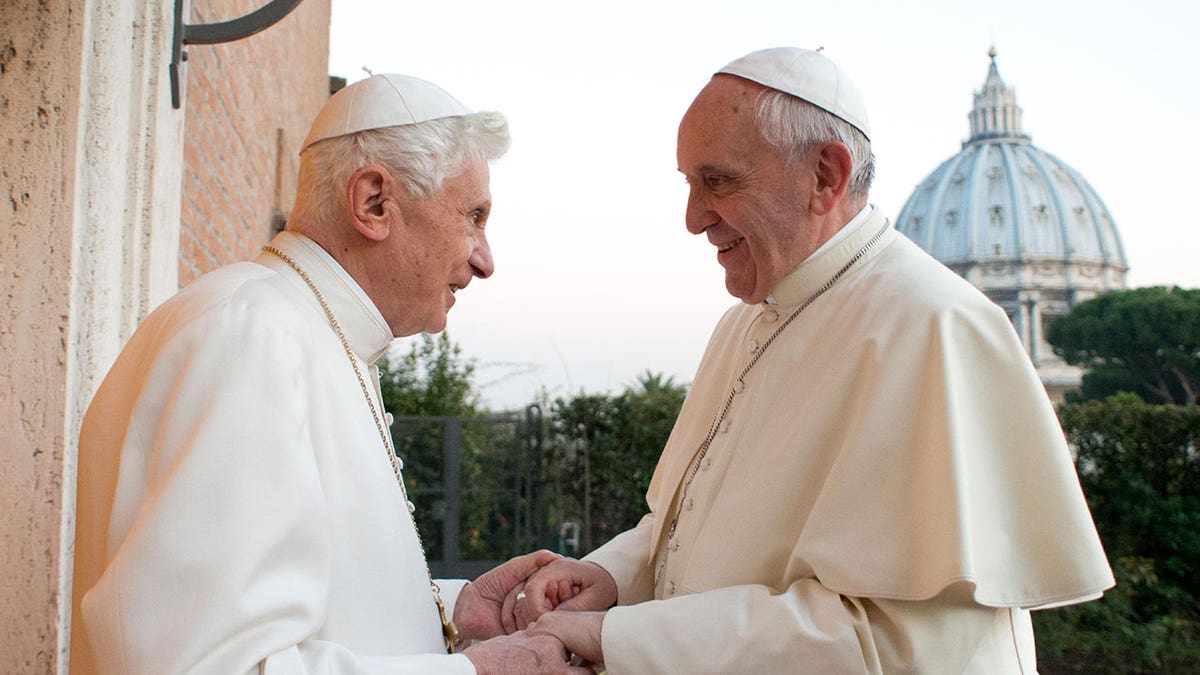
Pope Francis met former Pope Benedict XVI to exchange Christmas greetings in 2013, the year Benedict XVI resigned as pope. (Maurix/Gamma-Rapho via Getty Images))
Pope John Paul II (1978-2005)
Pope John Paul II, born Karol Wojtyła, was elected pope on Oct. 16, 1978. He was the first Polish pontiff.
Wojtyła took the regnal name after his predecessor, Pope John Paul I, who passed away only a month into his reign as the sovereign of Vatican City.
Wojtyła’s election by the College of Cardinals marked the first time a non-Italian would serve as pope in over 400 years. At 58 years old, Wojtyła was one of the youngest popes in history.
Wojtyla studied theology in Rome and served as the archbishop of Krakow. Through his 26-year pontificate, John Paul II traveled to 129 countries, becoming the most traveled pope in history.
POPE FRANCIS DIAGNOSED WITH BILATERAL PNEUMONIA, VATICAN SAYS
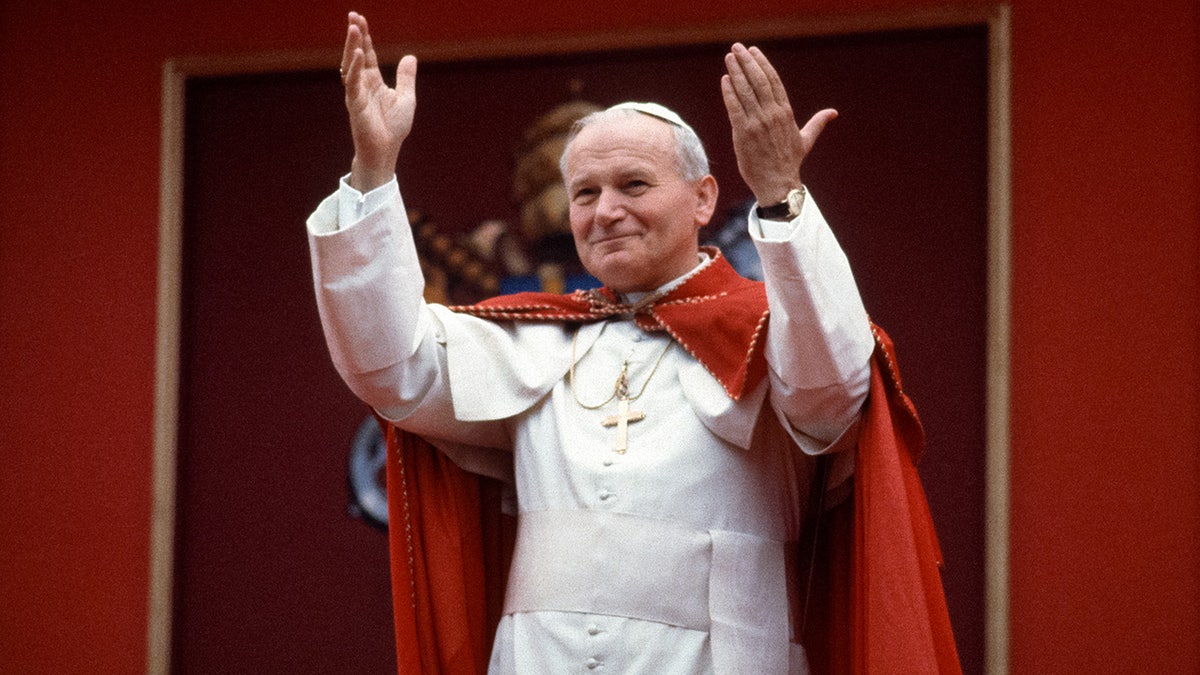
Pope John Paul II was the first Polish pope in history. (Chuck Fishman/Getty Images)
During his papacy, John Paul II preached service, the responsibility for peace and the protection of life. In 1981, a lone gunman, Mehmet Ali Ağca, attempted to assassinate the pope in St. Peter’s Square in Vatican City. He was struck twice while riding in an open car and seriously wounded. He was rushed to Gemelli Hospital in Rome and treated for his injuries.
John Paul II later visited Ağca in prison and forgave the shooter in person.
In 2005, John Paul died in his apartment in the Vatican at 84 years old. He was canonized as a saint in 2014.
Pope John Paul I (1978-1978)
Pope John Paul I, born Albino Luciani, was elected as pope on Aug. 26, 1978. His reign as the sovereign of Vatican City was brief, as he died 33 days later.
He was ordained in 1935, appointed bishop in 1958 and created archbishop of Venice in 1969. He is often referred to as «the Smiling Pope.»
Pope Paul VI (1963-1978)
Pope Paul VI was born Giovanni Battista Montini in Brescia, Italy. He was elected as pontiff in 1963 after being appointed archbishop of Milan.
During his papacy, Montini concluded three sessions of the Second Vatican Council, a significant renewal of the Catholic Church. The official documents marked a milestone in the church and condemned antisemitism.
WARTIME LETTER SHOWS POPE PIUS XII MAY HAVE KNOWN ABOUT HOLOCAUST EARLIER THAN PREVIOUSLY THOUGHT

Pope John Paul II was shot at by Mehmet Ali Ağca in 1981. He visited his would-be assassin in Rebibbia Jail, Rome. (Getty Images)
Montini traveled to the Holy Land in the Middle East, India, Uganda, the Philippines and parts of the United States during his reign.
In 2018, Pope Paul VI was canonized as a saint. He was recognized as a strong leader, and his efforts to build stronger bonds among other religions are cited as just one of the reasons for his canonization.
Pope Paul VI died in 1978 at 80 years old.
Pope John XXIII (1958-1963)
Pope John XXIII, born Angelo Giuseppe Roncalli, was born into a family of 13 children in Sotto il Monte, Italy.
In 1892, Roncalli entered the seminary. He was ordained in 1904, and was named a cardinal and the patriarch of Venice in 1953.
CATHOLIC CHURCH BEATIFIES POLISH FAMILY WHO SHELTERED JEWS DURING WWII: ‘PAID THE HIGHEST PRICE OF MARTYRDOM’
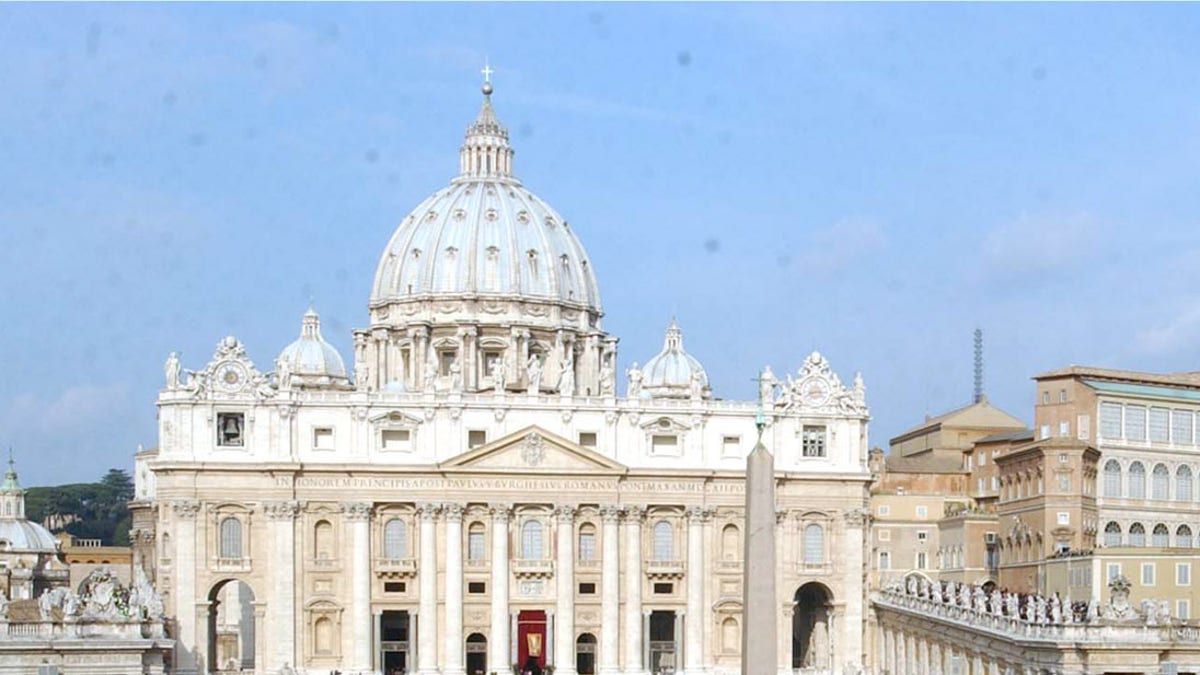
Funerals of past popes take place at Vatican City’s St. Peter’s, where many are interred. (AP)
As pontiff, Roncalli convened the Second Vatican Council, which modernized the Catholic Church by renewing liturgy and theology and developing better relationships with other religions.
Pope John XXIII died of cancer in 1963 and was canonized as a saint along with John Paul II in 2014.
Pope Pius XII (1939-1958)
Pope Pius XII, born Eugenio Pacelli, was an Italian cardinal before being elected pope on his 63rd birthday in 1939.
Pope Pius XI named Pacelli a cardinal after a one-day conclave among the College of Cardinals in 1929.
Pacelli was pope during World War II and through the Holocaust. Correspondence from Vatican archives shows Pacelli received word of the atrocities happening against Jewish people in Germany, and he often received pleas to help Jews.
POPE: VATICAN NEXT YEAR TO OPEN ARCHIVES ON WARTIME PIUS XII
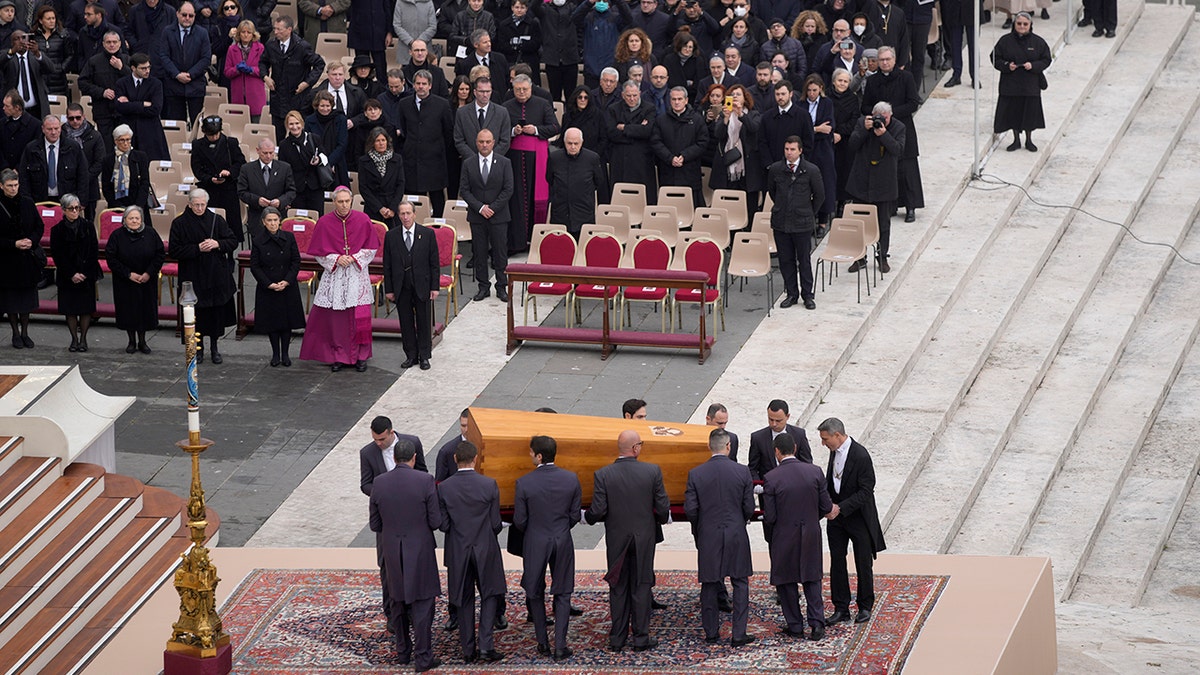
Pope Emeritus Benedict XVI died at 95 years old. His funeral took place in St. Peter’s Square and around 50,000 people were in attendance. (AP Photo/Ben Curtis)
Pope Pius XII has been intensely criticized for what has been called his lack of support for Jews during World War II, but the Vatican has remained steadfast in his defense.
Pius XII died in 1958 at 82 years old.
Pope Pius XI (1922-1939)
Pope Pius XI, born Ambrogio Damiano Achille Ratti, was ordained a priest in 1879. He was named a cardinal and archbishop of Milan in 1921 by Pope Benedict XV and elected pope in 1922.
CLICK HERE TO GET THE FOX NEWS APP
Benito Mussolini, the Italian dictator, came to power in 1922. The Lateran Treaty signed by Mussolini and the papacy acknowledged papal sovereignty over the Vatican City, making the state a neutral territory and the pope politically independent.
Pius XI died in 1939 at 81 years old.
INTERNACIONAL
Donald Trump intenta frenar otra guerra: habló con los líderes de Tailandia y Camboya y dijo que negociarán un alto el fuego
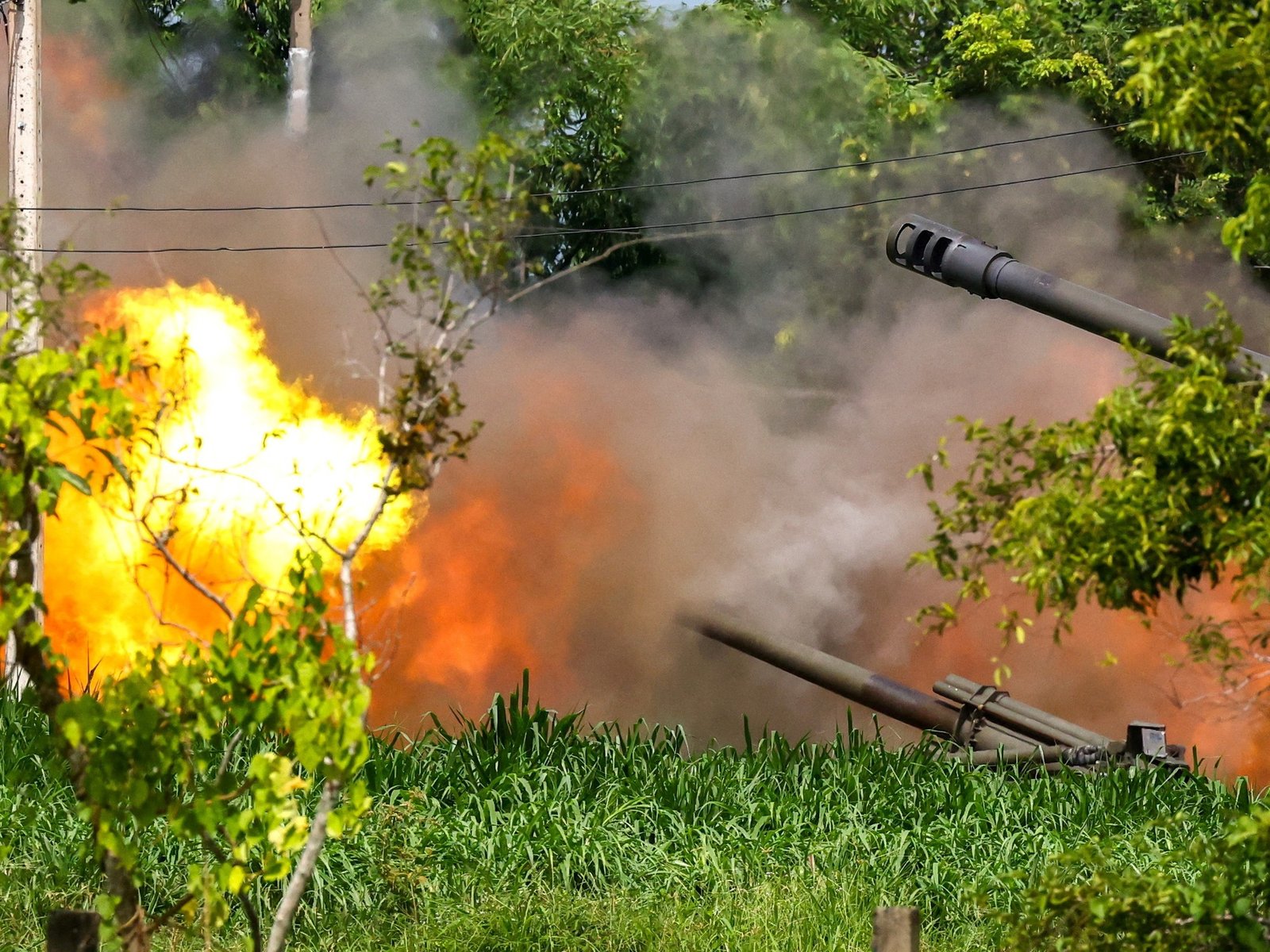
Al menos 33 muertos y evacuaciones masivas
Condiciones para una tregua
Una disputa de décadas
Donald Trump,Camboya,Tailandia
INTERNACIONAL
Incoming NGA Chair ‘disappointed’ in Dem governors ‘playing politics’ in bipartisan group
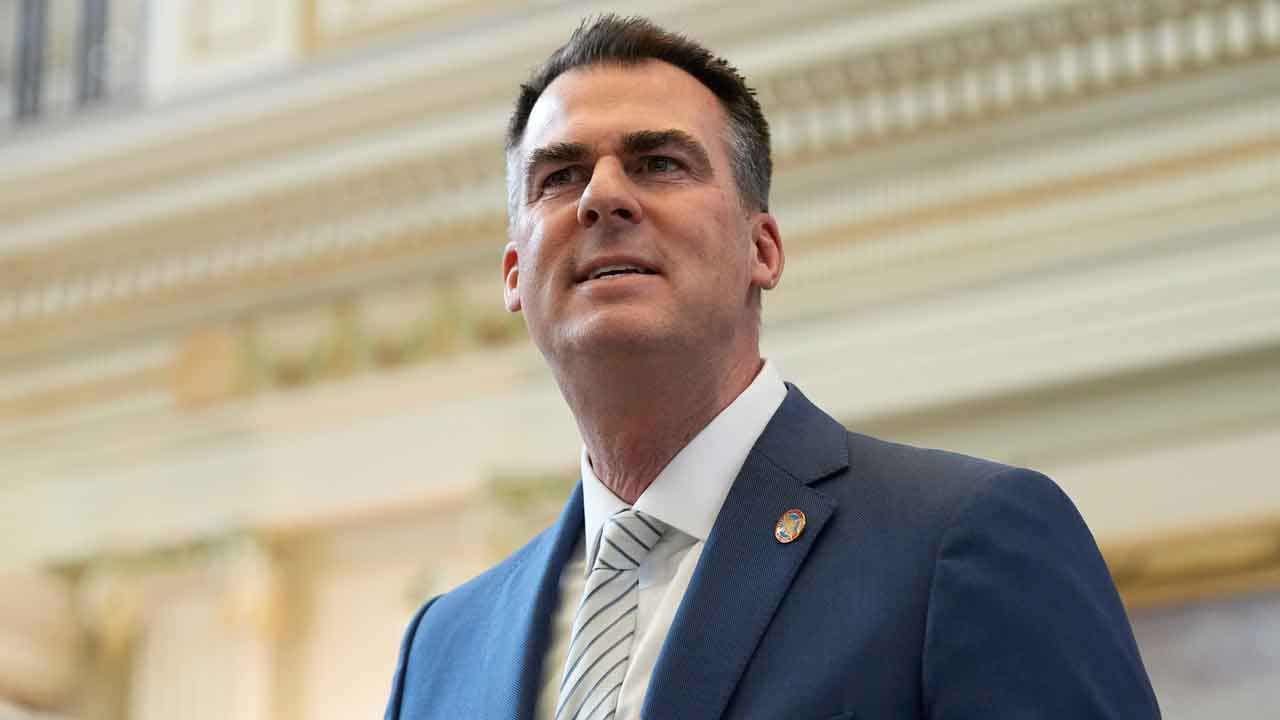
NEWYou can now listen to Fox News articles!
Colorado Springs, Colo. – Incoming chair of the National Governors Association (NGA), Gov. Kevin Stitt, R-Okla., is «disappointed» that some Democratic governors might stop paying their dues to the bipartisan group.
The Atlantic reported ahead of the NGA’s summer meeting in Colorado Springs, Colo., that at least two Democrats, Govs. Tim Walz of Minnesota and Laura Kelly of Kansas, plan to stop paying their dues when asked to renew their membership this month over the NGA’s response to President Donald Trump’s second term.
«We shouldn’t be playing politics like they do in Washington, D.C.,» Stitt told Fox News Digital in an exclusive interview at the summer meeting. «But sometimes, if you’re a governor running for president or a higher office, you make it political.»
Kelly is chair of the Democratic Governors Association (DGA), the partisan gubernatorial arm that has been vocal in resisting the Trump administration. As Walz weighs a third gubernatorial run, the former vice presidential candidate has remained a leading critic of Trump’s administration since losing the White House alongside Vice President Kamala Harris last year.
TIM WALZ LEADING DEM EFFORT TO TURN BIPARTISAN GROUP AGAINST PRESIDENT TRUMP: REPORT
Incoming National Governors Association (NGA) chair Gov. Kevin Stitt spoke to Fox News Digital during the NGA summer meeting in Colorado Springs, Colo. (Deirdre Heavey/Fox News Digital)
The Democratic discontent comes as Democratic Gov. Jared Polis of Colorado prepares to cede his chairmanship to Stitt, a Republican, at this weekend’s summer meeting. Gov. Wes Moore, D-Md., is set to become vice chair.
DEMOCRATS FORGE STRANGE BEDFELLOWS AS PARTY FLOUNDERS IN TRUMP’S 2ND TERM
«I would tell anybody, listen, do you want your leaders to take their ball and go home just because they get mad at something? That’s not the way to solve problems,» Stitt said, adding that he likes both Walz and Kelly.
«Listen, this isn’t the time to take our ball and go home. Let’s sit down and debate what the best policies [are] going forward,» Stitt added.
The Oklahoma governor said it can be «frustrating» when Democrats are constantly targeting Trump, but as a business leader, he said there are plenty of instances in which governors can find common ground, including a reduction of the United States’ more than $36 trillion in debt.
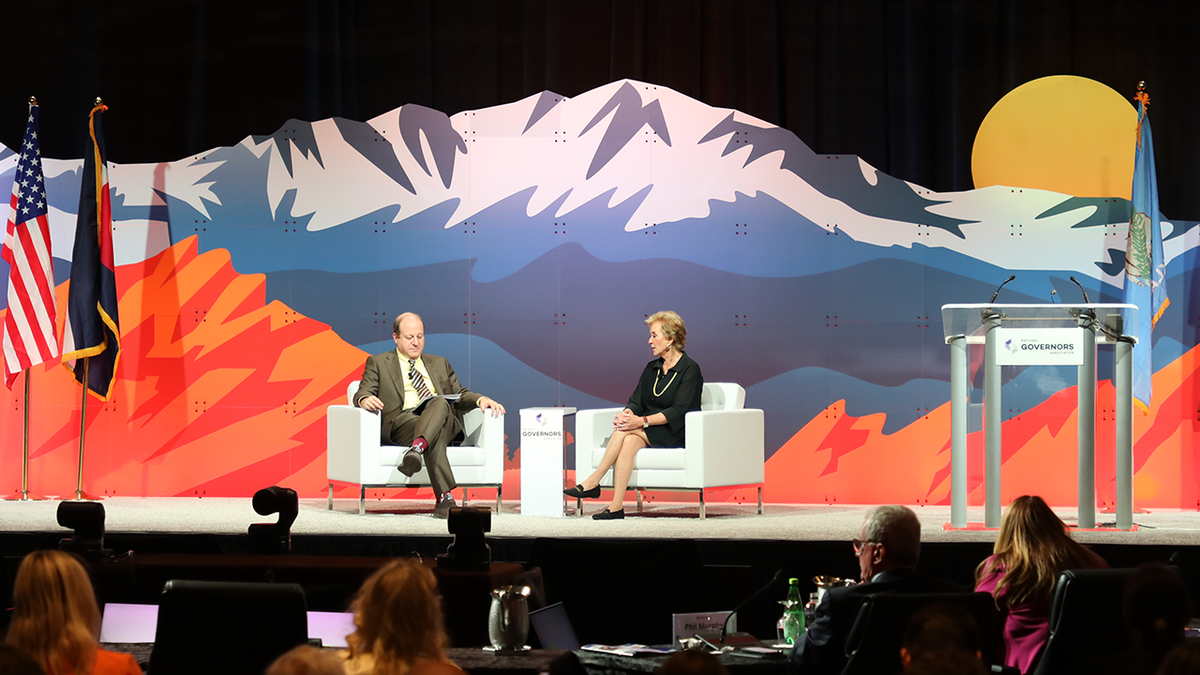
National Governors Association (NGA) outgoing chair Gov. Jared Polis discusses American education with Education Secretary Linda McMahon at the NGA Summer meeting in Colorado Springs, Colo., on Friday, July 25, 2025. (Deirdre Heavey – Fox News Digital)
Ahead of the summer meeting, Eric Wohlschlegel, NGA communications director, emphasized the bipartisan nature of the NGA and told Fox News Digital the NGA’s «mission hasn’t changed.»
According to The Atlantic report, Democratic members of the NGA complained the group «did not respond forcefully enough» when the Trump administration paused federal funding early this year, as Gov. Janet Mills of Maine clashed with Trump over biological men playing in women’s sports and, more recently, when Trump authorized the National Guard to California to amid the anti-ICE protests.
«Every public statement NGA issues reflects bipartisan consensus. So far this year, all but one statement has had that consensus, and when governors don’t agree, we simply don’t issue one. That’s how we preserve our role as a bipartisan convener, a principle we won’t compromise,» Wohlschlegel explained.
Thirteen Republican and seven Democratic leaders planned to attend the summer meeting, featuring discussions with Education Secretary Linda McMahon and Health and Human Services Secretary Robert F. Kennedy Jr.
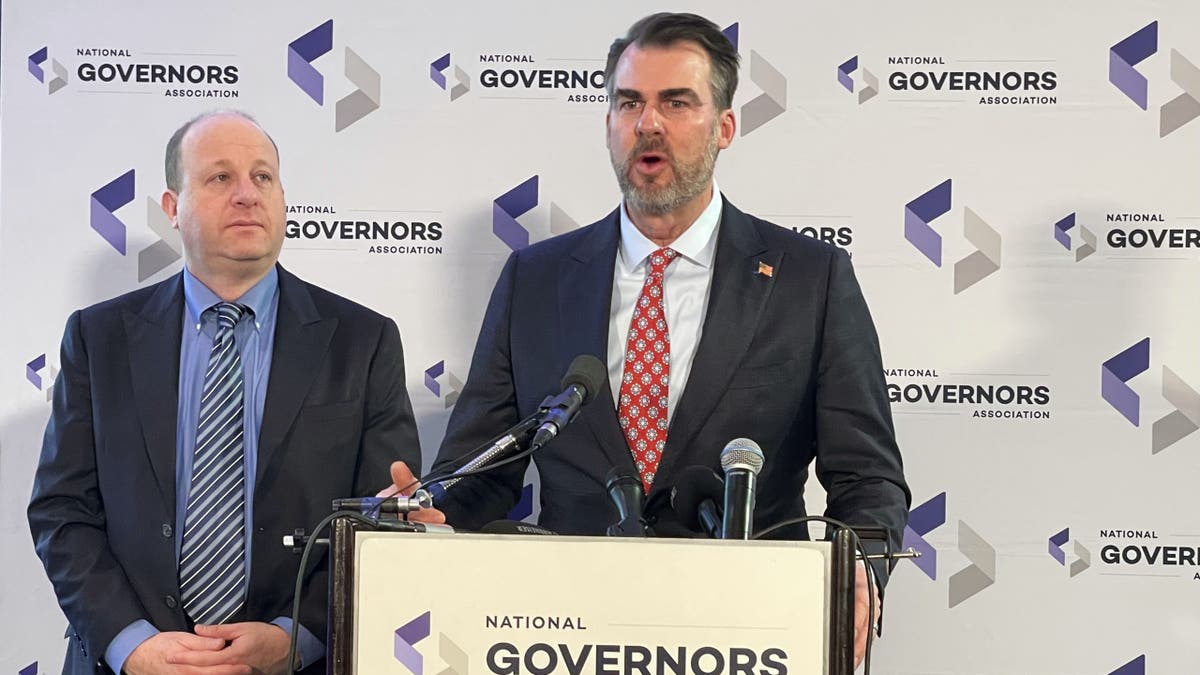
Oklahoma Gov. Kevin Stitt, vice chair of the NGA, speaks as chair Gov. Jared Polis of Colorado listens at the National Governors Association (NGA) winter meeting in Washington, D.C. (Fox News/Charlie Creitz)
A source familiar with the situation blamed the controversy on «Democratic infighting, unspoken campaign jockeying and a few anonymous voices looking to reshape a nonpartisan institution into a political one.»
The source added that «no governors are on the record expressing discontent with the NGA. No allegations of misconduct, governance failure or mismanagement have been raised.»
And without addressing the controversy directly, Conor Cahill, a spokesperson for Polis, told Fox News Digital the governor «has been honored» to lead the NGA and to «work across the aisle with governors on education, permitting reform, standing up to federal efforts to strip away gubernatorial authority around the National Guard and elevating the priorities of states.»
He added that «during this polarizing time, bipartisan organizations are needed more than ever, and NGA must continue to demonstrate value to all governors and effectively communicate governors’ opinions on various matters with the public and the federal government.»
CLICK HERE TO GET THE FOX NEWS APP
Abegail Cave, a spokesperson for Stitt, told Fox News Digital ahead of the NGA that «people seem to forget NGA is a bipartisan organization, not a political one.»
Fox News Digital reached out to Walz and Kelly for comment but did not immediately receive a response.
INTERNACIONAL
Una muestra en Barcelona revela la infancia de Claude y Paloma Picasso junto a sus padres artistas
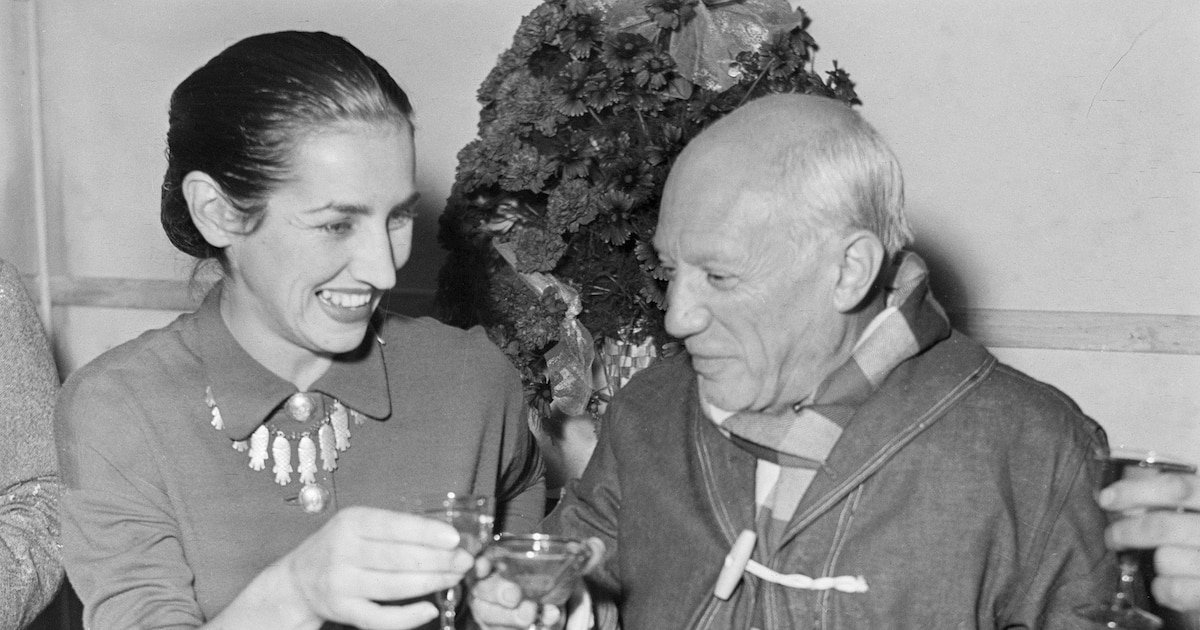
“No es fácil ser hija de Pablo Picasso, pero tampoco de François Gilot“, ha confesado Paloma Picasso en la presentación de la exposición Crecer entre dos artistas, con el que el Museo Picasso de Barcelona rinde homenaje a su hermano Claude.
Calificada por el director del museo y cocomisario, Emmanuel Guigon, como “sensible, emocionante y poética”, la exposición se podrá ver desde mañana viernes hasta el próximo 26 de octubre, y el público podrá seguir un viaje emotivo por la infancia de Claude y Paloma Picasso junto a sus padres, en Vallauris, en el sur de Francia, adonde se trasladaron tras la Segunda Guerra Mundial.
Impulsada por la propia Paloma Picasso, la muestra reúne cerca de un centenar de obras icónicas, y muchas de ellas inéditas como La Guenon et son petit, entre pinturas, cerámicas, juguetes y fotografías familiares, así como correspondencia, que ofrecen “una mirada íntima y excepcional a la vida familiar del artista”, remarca Guigon.

Las obras de la exposición, que ha contado con el apoyo de toda la familia Picasso, transmiten, según Guigon, “la felicidad de la vida familiar, y al mismo tiempo una vida centrada en el trabajo”, porque, como ha precisado Paloma, sus padres eran “por encima de artistas, dos trabajadores”.
Comienza la exposición con los retratos de los cuatro integrantes de la familia, convertidos en sombras chinas, pero que “también se podría interpretar como las figuras de las cerámicas griegas”, anota el director del museo barcelonés.
En una segunda sala hay retratos de la familia, algunos inéditos como un retrato de Françoise Gilot de 1946 (Mujer joven sentada), cuadros en los que se ve a los niños jugando, muchos recortes de papel convertidos en pequeños objetos para jugar, fuera un mosquetero, un autobús o un “arlequín dislocado”.
En este mismo espacio se encuentra la escultura La mona y su cría (1951) y los dibujos preparatorios, que muestran el proceso seguido por Picasso para convertir en una mona unos cochecitos que le había regalado Daniel-Henry Kahnweiler a Claude y que el artista ‘robó’ a su hijo.

“Esta escultura es la demostración de que Picasso, más que un genio, es humano, porque decir que es un genio es como si su creatividad le hubiera caído del cielo, y detrás de cada obra había mucho trabajo, como se ve en los dibujos en los que esos coches de Claude se convirtieron en una mona», ha señalado Guigon.
En el ecuador del recorrido, se pueden contemplar, por primera vez en España, algunas de las obras de Gilot, centradas en Claude y Paloma y la vida familiar en Vallauris, en la casa de La Galloise.
Se trata de una obra muy influenciada por Picasso, como se puede comprobar en óleos como Claude y Paloma jugando con una pelota (1953), Mis hijos jugando (1952), Claude a caballo sobre un juguete (1952), La lección de lectura o La mesa del jardín con Claude, éstas sin fecha.

Al final de la exposición, se exhiben algunas cerámicas picassianas con Claude como protagonista, una filmación en la que se puede ver al artista transformar un vaso en una paloma, así como la película que el propio Claude dirigió con Thierry Spitzer un año después de la muerte del malagueño, Atelier 74, que documenta el estado del taller de La Californie, prácticamente intacto desde que Picasso lo abandonó en 1961 para instalarse en Mougins.
Paloma Picasso ha destacado que “en aquel ambiente familiar no había diferencia entre las obras importantes y los juguetes que hacía Picasso“, como unas muñecas que creó con la cara de su hija, que “apenas las hizo -ha recordado- me las quitó, así es la vida”.
No ha ocultado también su satisfacción de que se pueda ver en Barcelona la obra de su madre, algo que frustró la pandemia.
Sobre la relación con dos padres artistas, Paloma Picasso ha comentado: “Mi padre vivía y compartía cosas con nosotros, ponía su vida como ejemplo, y mi madre, con un pensamiento más intelectual, expresaba su temor de que acabáramos odiando el arte, porque era el arte el que nos robaba tiempo con nuestros padres; pero vivir en un ambiente tan creativo es lo mejor para un niño”.
Ha asegurado que no tiene muchos recuerdos de sus padres juntos, pues cuando se separaron ella tenía cuatro años, pero “lo hicieron bien, porque ninguno de los dos hablaba mal del otro”.
De ambos heredó la idea de “no conformarse con lo que sabes hacer, sino ir más allá” y fue así como se acabó dedicando al diseño de joyas.
Fuente: EFE
bestof,celebrities,fashion,topics,topix,toppics,toppix

 POLITICA3 días ago
POLITICA3 días agoMáximo Kirchner declaró una fortuna de 8.300 millones de pesos: representa un 76% más que el año anterior

 POLITICA2 días ago
POLITICA2 días agoLa justicia de Santa Cruz desafío a la Corte Suprema e incluyó a Cristina Kirchner en el padrón electoral

 POLITICA3 días ago
POLITICA3 días agoQué dijo Javier Milei en la Derecha Fest: las frases más impactantes














